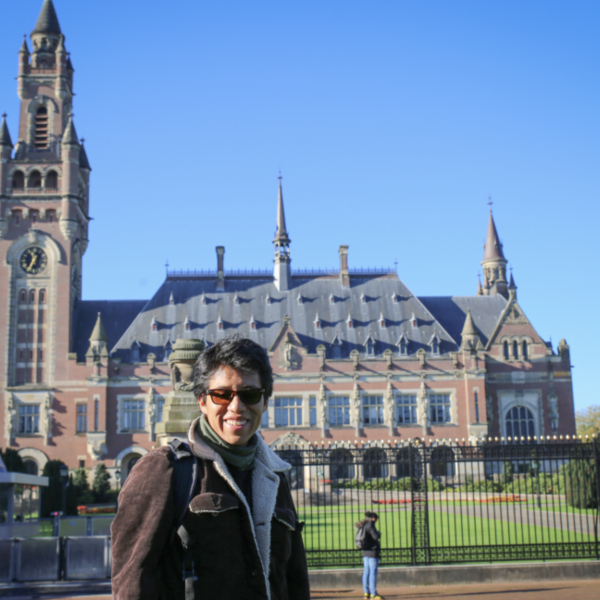Directing Space: from too decentralized to too national?
Image: Patrick van den Hurk

In the Netherlands, we were always proud of the extent to which our landscape was not fragmented. Not a patchwork, but sound spatial planning. Yet that came to an end in 2010, when the Ministry of Housing, Spatial Planning and the Environment was abolished and the direction of space was decentralized. Against the backdrop of a series of crises, there are calls for more national direction. Are we moving from one extreme to the other? What type of direction fits? National direction is needed, but the knowledge and skill in municipalities must also be utilized and increased, see our experts Space & Housing Jan Maessen and Anne Verschraagen.
From grip to scarcity
Since Reconstruction, the Netherlands has had a tradition of structured spatial planning with fairly strong national control. We were proud of it: no fragmented landscape, but clustered growth in a number of new cities such as Lelystad, Almere and Zoetermeer. Later the policy shifted to further growth in or against existing growth centers - the well-known VINEX neighborhoods.
Until 2010. In that year, the Ministry of Housing, Spatial Planning and the Environment was disbanded. After years of neoliberal policies - in which more and more government tasks were transferred to the market - then-Minister Blok jubilated that he was the first VVD member to "make an entire ministry disappear.
We are now 13 years on and the competition for space in the Netherlands is greater than ever. Space, already scarce in the Netherlands, is proving even scarcer in light of the various tasks facing the Netherlands. Think of the housing shortage and asylum reception, climate change and energy transition, agriculture and nitrogen, environment and nature, traffic and transportation and the economic development of the Netherlands. All make demands on space.
The Council for the Environment and Infrastructure wrote about this in their report 'Give direction, make space' in 2021. The report identified that the current spatial steering of developments falls short, both in terms of content and process, to address 'the great transformation' of the Netherlands. Fortunately, the report also makes recommendations to remedy the shortcomings: 'The shortcomings do not call for amending legislation, not for rebuilding the House of Thorbecke, and not for 'going back to the old days'. But they do call for new forms of direction and good cooperation between governments, the market, corporations and implementing organizations in which parties dare to use the existing spatial instruments and call each other to account when goals are not met.'
National direction
More national direction came. In 2022, the elevated role of Stef Blok returned: Hugo de Jonge became Minister of Housing and Spatial Planning. The call for national direction echoed more widely. Adriaan Geuze, professor of landscape architecture at TU Delft, among others, speaks out on this. 'Quality and beautiful cultural landscape, a healthy environment and efficient mobility [...] also requires the direction that the national government now claims to be resuming.' Former spatial planning inspector John Henssen also draws the same conclusion. 'Just when plans need to be made to build new housing and reorganize agriculture on a large scale, just when the problems with drought, flooding and salinization are becoming more acute, the direction is lacking. Building one million homes cannot be done without government direction. Restoring nature cannot be done without national objectives.
In March 2022 Hugo de Jonge took that direction by means of a National Housing and Construction Agenda and the Program for Housing. Will the national direction solve the various spatial issues? But also: what are the risks of taking back the responsibilities that have been decentralized with great enthusiasm in recent years? We talked about this with Eveline Kokx - department head of spatial policy in Gouda and former project leader of the Hague Omgevingsvisie - and Ivana Somers - alderman for Building and Housing in Vlaardingen, who also has Spatial Planning in her portfolio.
Foot in the Door
Part of De Jonge's notes around housing is the ambition to build 900,000 new homes through 2030, with the standard of at least two-thirds affordable rental and owner-occupied housing, some 600,000 homes in other words.
Is it realistic to have one building standard for all municipalities? Eveline Kokx understands the idea behind it, but is not unabatedly enthusiastic. She explains, "The norm for social housing construction comes from solidarity as a starting point in policy. However, housing needs are not evenly distributed across the country. Corporations used to have vacancies. For example, in Delfzijl and other shrinkage areas.' Her suggestion? 'We need to think much more from qualities in and needs of an area. That includes recreation, nature, et cetera. How are we going to land that in this area? Then you may end up with a different distribution locally'.
Ivana Somers is more enthusiastic: "It is great that this standard is coming, and that it is the same for all municipalities. If you meet it, you have a lot of room to negotiate for other ambitions. If as a municipality you don't live up to your responsibility - and unfortunately there are quite a few examples of this - this standard provides a big advantage.'
In short: a foot in the door helps, but the task is not the same everywhere. A national standard helps to keep the pressure on, especially with municipalities that have not borne their fair share of the social housing task for years. At the same time, this also varies by region. In the Vlaardingen region, for example, there is great scarcity at the bottom of the housing market, so Alderman Somers is pleased that the new law keeps the pressure on other municipalities in the region. At the same time, the pressure on the housing market is not evenly distributed across the country, and the demand is not the same everywhere: The task in shrinkage areas is obviously a different one than in the Randstad.
Official craftsmanship
Because the Ministry of the Interior and Kingdom Relations has published the National Building and Housing Agenda, to which a legal set of instruments is now being added with the Strengthening the Direction of Public Housing Act, Hugo de Jonge seems to take the position that the lack of direction on space is due to the lack of the right set of instruments.
Kokx believes that we should not look for the explanation in the lack of an instrumentarium; according to her, a lack of knowledge about the available instruments is a more important cause.
'Within the current Spatial Planning Act, municipalities and provinces have more than enough instruments to take control of spatial development. We used to have housing quotas from the province, which municipalities then had to fill. These have now gone, while this method of working also provided direction and consistency in housing development. In the same way, other large spatial projects, such as Room for the River, got off the ground. These existing instruments also contained clear frameworks and escalation options if governments were unable to reach agreement among themselves.'
Somers also points this out: 'Do we need new legal instruments, or should we make better use of the resources we already have? Even in the current situation, municipalities coordinate with each other within partnerships or in a provincial context about the housing task, and there is often already an escalation possibility if parties do not assume their responsibilities in this.'
What municipalities are increasingly coming up against - according to both experts by experience - is that the past decade has seen severe cutbacks in civil service organizations, which has put a great deal of pressure on the expertise and time available to deal with these issues properly.
However, much of the knowledge and expertise in housing policy has disappeared since the 2008 crisis. The number of municipal officials decreased by 20,000 between 2009 and 2014. To give an example, in The Hague, the city development department decreased from 750 to 350 employees. Much knowledge that flowed out of civil service organizations never returned. In addition, municipalities are largely (increasingly) funded from projects. As a result, no robust knowledge is built up in the civil service organization. As a result, the standing spatial development department has largely been stripped out. The state should push hard for robust funding of spatial development through the municipal fund.
Build, build, build - or move?
The approach of the Ministry of the Interior and Kingdom Relations places strong emphasis on taking control of the housingtask. Although this is the most tangible - seemingly simple - form of tackling the housing shortage, analysis by CBS and others shows that more factors than just not building enough are responsible for the situation in the housing market.
In March 2023, CBS published a study of the main factors influencing house price increases (in the period 2013-2022, owner-occupied and rented houses increased more than 90 percent in price). Remarkably, CBS concludes that "the size of the housing stock [read: the number of newly built houses] seems to have kept up with demographic developments from 2014 onwards." On top of the demographic developments in the Netherlands, there are a number of other factors at play, which together account for the large perceived tightness in the housing market and associated price increases. CBS mentions:
- An increase in the number of people in their thirties who want to enter the purchase market and because the elderly are going to nursing homes less and later;
- Population and household growth more often composed of immigrants who need housing acutely and cannot delay it by, for example, living with parents longer.
- Demand from unregistered seasonal migrants;
- Much informal housing supply - such as rooms with landladies or subletting - has disappeared with the rise of Airbnb and the introduction of the cost-sharing norm.
In addition, CBS describes that the housing types built in the period 2013-2022 are poorly matched to demand: too many large, expensive homes have been built, while the number of condominium homes and medium-sized homes - for which there is a great need - lags behind.
So the housing shortage is about more than just build, build, build. More effective policies will be needed to get the housing market moving. This includes, for example, enticing the elderly to live differently so that family housing is available and accessible to families. Or to curb lucrative vacation rentals through platforms like AirBnB so that homes become available for long-term rental.
Conclusions
Will Hugo de Jonge's approach solve the housing market crisis? Perhaps in part, but the situation, as is often the case, is complex, and in part the current interpretation of more national direction is focusing on the wrong things.
Some conclusions: while putting pressure on municipalities that fail to address their responsibilities in regions where housing market pressures are severe is welcome, the current mantra of "direction, direction, direction," is no panacea. Pressure on the housing market is not evenly distributed across the country, and demand is not the same everywhere. It is therefore important for municipalities and regions to retain the room to make specific housing market policies.
To this end, it is important that municipalities are given room to structurally attract spatial expertise through more robust funding from the municipal fund. Only with that expertise in house are municipalities able to make effective spatial policy, making optimal use of the Spatial Planning Act.
More effective policies will also be needed to get the housing market moving. Merely setting standards for new housing construction ignores the complexity of the situation. Policies must include, for example, enticing the elderly to live differently so that family housing is available and accessible to families. Or to curb lucrative vacation rentals through platforms like AirBnB, so that housing becomes available for long-term rental.









